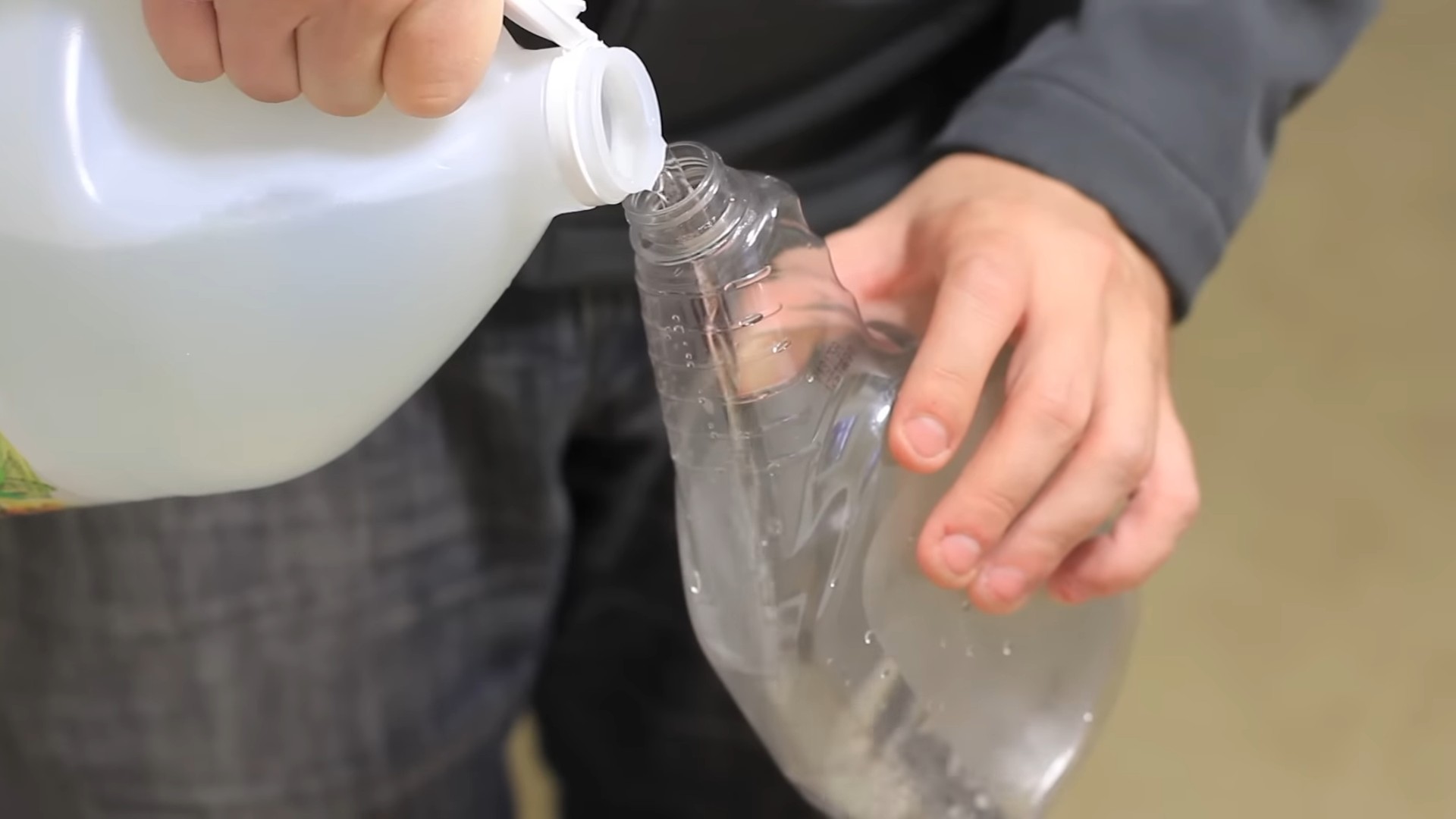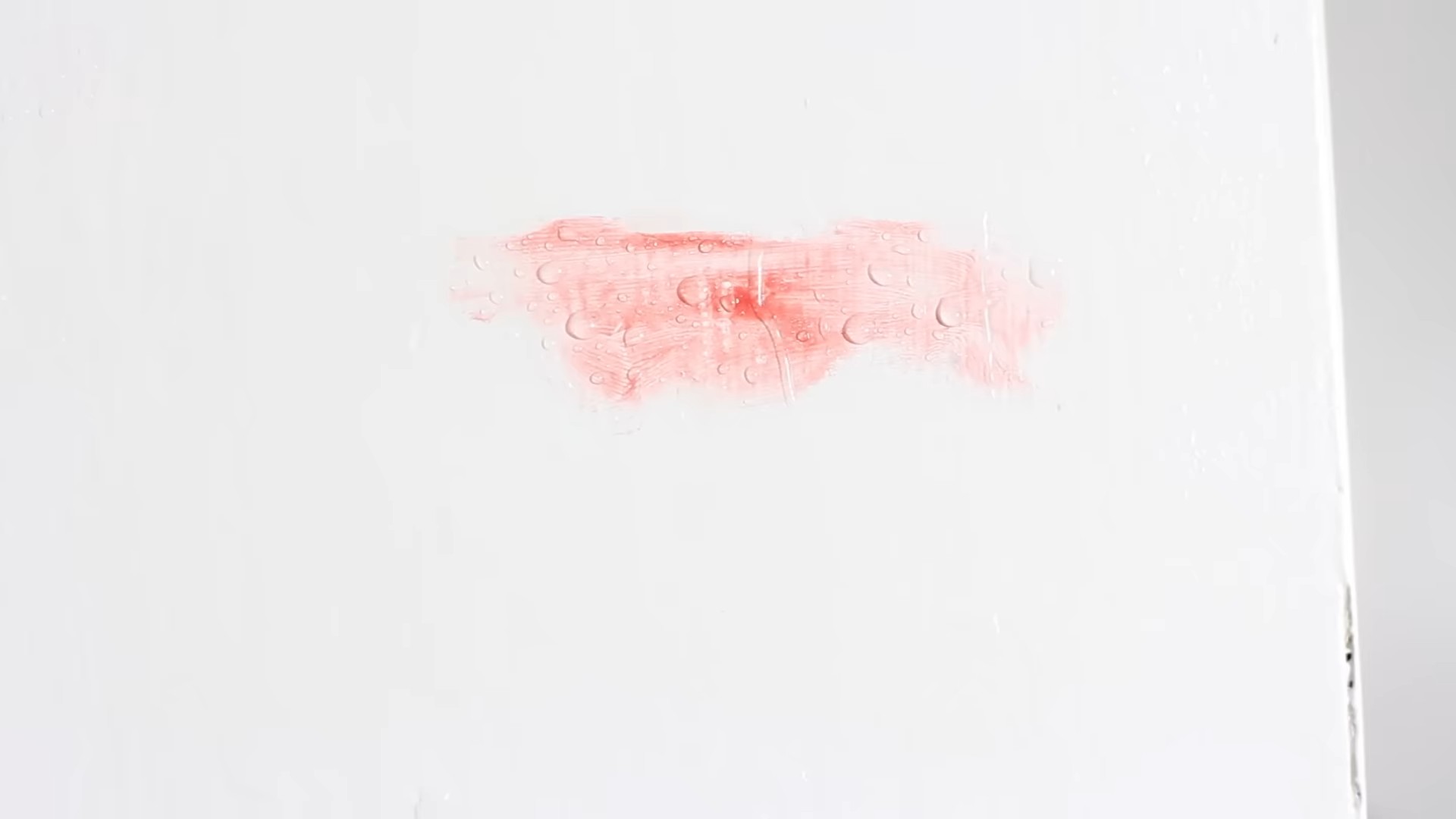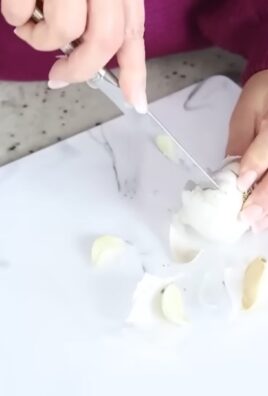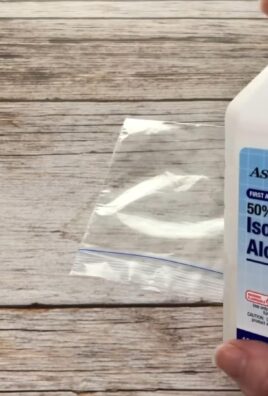Vinegar life hacks – who knew this humble kitchen staple could be your secret weapon for a thriving home and garden? I’m constantly amazed by the versatility of vinegar, and I’m excited to share some incredible DIY tricks that will save you time, money, and effort.
For centuries, vinegar has been more than just a condiment. From ancient civilizations using it for cleaning and preserving food to its role in traditional medicine, vinegar has a rich history of practical applications. Think about it – our grandmothers probably knew these tricks!
In today’s world, we’re all looking for ways to simplify our lives and be more resourceful. That’s where these vinegar life hacks come in. Are you tired of harsh chemicals and expensive cleaning products? Do you want to find natural solutions for common household problems? Then you’re in the right place! I’ll show you how to use vinegar to tackle everything from stubborn stains to pesky garden weeds, all while being kind to the environment and your wallet. Get ready to unlock the amazing potential of vinegar and transform your home with these simple, yet effective, DIY solutions!

Unlocking the Magic of Vinegar: DIY Hacks for a Sparkling Home and More!
Hey there, fellow DIY enthusiasts! Get ready to be amazed by the sheer versatility of vinegar. This humble kitchen staple is a powerhouse when it comes to cleaning, deodorizing, and even tackling some surprising household problems. I’m going to share some of my favorite vinegar hacks that will save you money and keep your home looking its best. Let’s dive in!
Cleaning Powerhouse: Vinegar to the Rescue!
Vinegar’s acidity makes it a fantastic natural cleaner. It cuts through grease, dissolves mineral deposits, and disinfects surfaces. Plus, it’s a much safer alternative to harsh chemical cleaners.
Cleaning Your Microwave with Ease
Microwaves can get pretty gross, pretty fast. Splatters and spills harden, making them a pain to clean. But fear not, vinegar is here to help!
1. Prepare the Solution: In a microwave-safe bowl, mix equal parts white vinegar and water (about 1 cup of each).
2. Microwave Magic: Place the bowl in the microwave and heat it on high for 5-10 minutes. The mixture should boil and create steam.
3. Steam Clean: Let the bowl sit in the microwave for another 5 minutes. This allows the steam to loosen the grime.
4. Wipe Away the Mess: Carefully remove the bowl (it will be hot!). Use a clean cloth or sponge to easily wipe away the softened food particles. For stubborn spots, dip the cloth in the vinegar solution.
5. Sparkling Clean: Your microwave should now be sparkling clean and odor-free!
De-Scaling Your Showerhead
Hard water can leave unsightly mineral deposits on your showerhead, reducing water pressure and making it look dull. Vinegar can dissolve those deposits and restore your showerhead to its former glory.
1. Gather Your Supplies: You’ll need a plastic bag (a sandwich bag works well), white vinegar, a rubber band, and an old toothbrush.
2. Vinegar Bath: Fill the plastic bag with enough white vinegar to completely submerge the showerhead.
3. Secure the Bag: Attach the bag to the showerhead using the rubber band, ensuring the showerhead is fully immersed in the vinegar.
4. Soak Overnight: Let the showerhead soak in the vinegar overnight (or for at least a few hours).
5. Scrub Away: Remove the bag and use the old toothbrush to scrub away any remaining mineral deposits.
6. Rinse Thoroughly: Rinse the showerhead thoroughly with water to remove any lingering vinegar smell.
7. Enjoy the Flow: Enjoy your revitalized showerhead with improved water pressure!
Cleaning Your Coffee Maker
Just like showerheads, coffee makers can accumulate mineral deposits from hard water, affecting the taste of your coffee. Regular cleaning with vinegar can keep your coffee maker running smoothly and your coffee tasting great.
1. Prepare the Vinegar Solution: Fill the water reservoir of your coffee maker with a solution of equal parts white vinegar and water.
2. Brew the Solution: Run a full brewing cycle with the vinegar solution.
3. Rinse with Water: After the brewing cycle is complete, discard the vinegar solution and fill the water reservoir with fresh water.
4. Run Multiple Rinse Cycles: Run two or three brewing cycles with fresh water to remove any remaining vinegar taste and smell.
5. Enjoy Fresh Coffee: Your coffee maker is now clean and ready to brew delicious coffee!
Reviving Dull Laundry
Vinegar can work wonders on your laundry, acting as a natural fabric softener, odor eliminator, and color brightener.
1. Fabric Softener Alternative: Add 1/2 cup of white vinegar to the fabric softener dispenser of your washing machine. It will soften your clothes without leaving any residue.
2. Odor Eliminator: To remove stubborn odors from clothes (like smoke or mildew), add 1 cup of white vinegar to the wash cycle.
3. Color Brightener: To brighten colors and prevent fading, add 1/2 cup of white vinegar to the wash cycle.
4. Stain Remover: For certain stains, like grass or deodorant, pretreat the stain by dabbing it with undiluted white vinegar before washing.
Cleaning Windows and Mirrors for a Streak-Free Shine
Forget expensive window cleaners! Vinegar can give you streak-free windows and mirrors without the harsh chemicals.
1. Prepare the Cleaning Solution: Mix equal parts white vinegar and water in a spray bottle.
2. Spray and Wipe: Spray the solution onto the window or mirror and wipe clean with a microfiber cloth.
3. Buff to Shine: For an extra shine, buff the surface with a clean, dry microfiber cloth.
Deodorizing Magic: Banish Unwanted Smells!
Vinegar is a natural odor absorber, making it perfect for eliminating unpleasant smells around your home.
Eliminating Fridge Odors
A smelly fridge can be a real turn-off. Vinegar can help absorb those lingering odors and keep your fridge smelling fresh.
1. Vinegar Sponge: Soak a sponge in white vinegar and place it in the fridge.
2. Vinegar Bowl: Alternatively, place a bowl of white vinegar in the fridge.
3. Replace Regularly: Replace the vinegar every few days to maintain its odor-absorbing power.
Freshening Up Your Garbage Disposal
Garbage disposals can often harbor unpleasant odors. Vinegar can help break down food particles and eliminate those smells.
1. Vinegar Ice Cubes: Freeze white vinegar in ice cube trays.
2. Grind the Cubes: Drop a few vinegar ice cubes into the garbage disposal and run it until the cubes are completely ground.
3. Flush with Water: Flush the disposal with cold water for a few seconds.
Neutralizing Pet Odors
Pet accidents happen, and they can leave behind lingering odors. Vinegar can help neutralize those smells and prevent your pet from re-marking the same spot.
1. Clean the Area: Clean the affected area thoroughly with a pet-safe cleaner.
2. Vinegar Solution: Mix equal parts white vinegar and water in a spray bottle.
3. Spray and Blot: Spray the vinegar solution onto the affected area and blot it with a clean cloth.
4. Let it Dry: Allow the area to air dry completely.
5. Test First: Always test the solution on an inconspicuous area first to ensure it doesn’t damage the surface.
Beyond Cleaning: Surprising Vinegar Hacks!
Vinegar’s uses extend far beyond cleaning and deodorizing. Here are a few surprising hacks you might not have heard of.
Weed Killer for Your Garden
Vinegar can be a natural and effective weed killer, especially for small weeds in cracks and crevices.
1. Prepare the Solution: Use undiluted white vinegar or a stronger horticultural vinegar (available at garden centers).
2. Spray the Weeds: Spray the vinegar directly onto the weeds, being careful to avoid spraying desirable plants.
3. Repeat as Needed: Repeat the application as needed until the weeds are completely dead.
4. Caution: Vinegar can kill any plant it comes into contact with, so use it carefully.
Extending the Life of Cut Flowers
Vinegar can help keep your cut flowers looking fresh for longer.
1. Prepare the Solution: Add 2 tablespoons of white vinegar and 1 teaspoon of sugar to the vase water.
2. Change Regularly: Change the water and add fresh vinegar and sugar every few days.
Removing Stickers and Labels
Stubborn stickers and labels can be a pain to remove. Vinegar can help loosen the adhesive and make them easier to peel off.
1. Soak the Sticker: Soak a cotton ball in white vinegar and apply it to the sticker or label.
2. Let it Sit: Let the vinegar sit for a few minutes to soften the adhesive.
3. Peel Away: Gently peel away the sticker or label.
4. Repeat if Necessary: Repeat the process if necessary until the sticker is completely removed.
Soothing Sunburn
Vinegar can help soothe sunburned skin and reduce inflammation.
1. Prepare the Solution: Mix equal parts white vinegar and cool water.
2. Apply to Skin: Gently apply the solution to the sunburned skin using a clean cloth or spray bottle.
3. Repeat as Needed: Repeat the application as needed to relieve discomfort.
4. Caution: Avoid applying vinegar to broken skin.
Cleaning Your Dishwasher
Dishwashers can also accumulate mineral deposits and food residue, affecting their performance. Vinegar can help clean and deodorize your dishwasher.
1. Empty Dishwasher: Make sure your dishwasher is empty.
2. Vinegar in the Top Rack: Place a dishwasher-safe cup filled

Conclusion
So, there you have it! Unlocking the power of vinegar goes far beyond just salad dressings and pickling. This simple, inexpensive ingredient is a veritable Swiss Army knife for your home, offering a multitude of solutions for cleaning, deodorizing, and even improving the quality of your everyday life. We’ve explored just a few of the incredible vinegar life hacks that can save you time, money, and a whole lot of elbow grease.
Why is this a must-try? Because it’s effective, eco-friendly, and readily available. In a world saturated with harsh chemicals and expensive cleaning products, vinegar offers a refreshing alternative. It’s a return to simplicity, a nod to resourcefulness, and a powerful way to reduce your environmental footprint. Plus, let’s be honest, who doesn’t love saving a few bucks?
But the beauty of these vinegar life hacks lies in their adaptability. Feel free to experiment and find what works best for you. For instance, if you’re using vinegar to clean your shower, try adding a few drops of your favorite essential oil, like lavender or eucalyptus, for a more pleasant scent. If you’re dealing with particularly stubborn hard water stains, consider letting the vinegar soak for a longer period. And for those who find the smell of vinegar a bit too strong, diluting it further with water can help.
Consider these variations:
* **Infused Vinegar:** Infuse white vinegar with citrus peels (lemon, orange, grapefruit) for a naturally scented cleaner. Simply combine the peels and vinegar in a jar, let it sit for a few weeks, and then strain.
* **Herbal Vinegar:** Similar to citrus infusion, you can infuse vinegar with herbs like rosemary, thyme, or lavender for a fragrant and effective cleaning solution.
* **Vinegar and Baking Soda Power Duo:** For extra cleaning power, combine vinegar with baking soda. This creates a fizzing action that helps to loosen dirt and grime. Use caution, as this combination can produce a lot of foam.
We’ve only scratched the surface of what’s possible with vinegar. From removing stubborn stains to freshening up your laundry, the possibilities are endless. The key is to be creative and to experiment until you find the solutions that work best for your needs.
We wholeheartedly encourage you to try these vinegar life hacks and discover the amazing benefits for yourself. You might be surprised at just how versatile and effective this humble ingredient can be.
But don’t just take our word for it! We want to hear about your experiences. Did you try one of these hacks and find it particularly helpful? Did you discover a new and innovative use for vinegar that we haven’t mentioned? Share your stories, tips, and tricks in the comments below. Let’s create a community of vinegar enthusiasts and unlock even more of its potential together. Your insights could help others discover the magic of vinegar and transform their homes and lives. So go ahead, give it a try, and let us know what you think! We are confident that you will be amazed by the power of these simple, yet effective, **vinegar life hacks**.
Frequently Asked Questions (FAQs)
Is it safe to use vinegar on all surfaces?
No, it’s not. While vinegar is a fantastic natural cleaner, it’s acidic and can damage certain surfaces. Avoid using vinegar on natural stone surfaces like marble, granite, and travertine, as it can etch and dull the finish. It’s also best to avoid using vinegar on waxed furniture, as it can strip the wax. Always test vinegar on an inconspicuous area first to ensure it doesn’t cause any damage. Also, avoid using vinegar on electronics screens.
What type of vinegar is best for cleaning?
Distilled white vinegar is generally considered the best type of vinegar for cleaning. It’s clear, inexpensive, and has a consistent acidity level, making it effective for a wide range of cleaning tasks. Avoid using colored vinegars, such as apple cider vinegar or balsamic vinegar, as they can stain some surfaces.
Can I mix vinegar with bleach?
Absolutely not! Mixing vinegar with bleach creates toxic chlorine gas, which can be extremely harmful and even deadly. Never, ever mix these two substances. Always use vinegar and bleach separately, and rinse surfaces thoroughly after using one before applying the other.
How do I get rid of the vinegar smell after cleaning?
The vinegar smell usually dissipates within a few hours. To speed up the process, you can open windows and doors to ventilate the area. You can also add a few drops of essential oil to your vinegar solution to mask the smell. Citrus oils, lavender, and eucalyptus are all good choices. Another option is to boil water with citrus peels or spices like cinnamon and cloves to naturally freshen the air.
Can I use vinegar to clean my coffee maker?
Yes, vinegar is an excellent way to clean your coffee maker and remove mineral buildup. Fill the water reservoir with a solution of equal parts vinegar and water. Run the coffee maker through a full brewing cycle. Then, run it through two or three cycles with just water to rinse away any remaining vinegar.
Is vinegar safe for septic systems?
Yes, vinegar is generally considered safe for septic systems. It’s a natural substance that breaks down quickly and doesn’t contain harsh chemicals that can harm the beneficial bacteria in your septic tank. However, it’s always a good idea to use vinegar in moderation.
How can I use vinegar to unclog a drain?
Pour about a cup of baking soda down the drain, followed by a cup of vinegar. Let it fizz for about 30 minutes, then flush with hot water. The combination of baking soda and vinegar creates a chemical reaction that can help to loosen clogs. For stubborn clogs, you may need to repeat the process.
Can vinegar kill mold?
Yes, vinegar can kill some types of mold. Spray undiluted white vinegar onto the moldy surface and let it sit for an hour. Then, scrub the area with a brush and wipe it clean. Be sure to ventilate the area well while you’re cleaning. However, vinegar may not be effective against all types of mold, and it’s important to address the underlying cause of the mold growth to prevent it from returning. For large or severe mold infestations, it’s best to consult with a professional mold remediation company.
How do I clean my microwave with vinegar?
Combine 1/2 cup of vinegar and 1/2 cup of water in a microwave-safe bowl. Microwave on high for 5-10 minutes, or until the solution boils and the microwave is filled with steam. Carefully remove the bowl (it will be hot!) and wipe down the inside of the microwave with a cloth. The steam will loosen any splatters and food residue, making it easy to clean.
Can I use vinegar to remove hard water stains?
Yes, vinegar is very effective at removing hard water stains. Soak a cloth or paper towel in vinegar and place it over the stained area. Let it sit for 30 minutes to an hour, then scrub the area with a brush or sponge. Rinse with water and dry. For tougher stains, you may need to repeat the process or use a stronger vinegar solution.




Leave a Comment